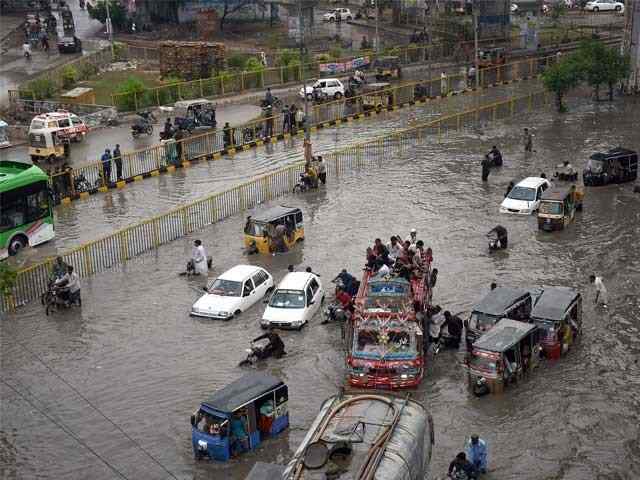Every monsoon, Karachi floods. Streets become rivers, homes are submerged, and chaos reigns. And every year, the city scrambles for a response—emergency holidays, temporary relief camps, and frantic cleanups—only to face the same catastrophe again when the rains return.
The tragedy isn’t simply about extreme weather; it’s about a system that has learned to profit from crisis rather than prevent it.
A City That Powers Pakistan, Yet Crumbles Each Rainfall
Karachi generates roughly a quarter of Pakistan’s GDP. Yet, its drainage system can barely handle 40 mm of rain. The imbalance between the city’s economic importance and the infrastructure it receives is glaring.
Meteorologists had warned of heavy rainfall this season, but alerts weren’t matched with early action. The city declared a public holiday after the flooding began, rather than before. Even with unprecedented rainfall, the chaos was predictable—because the city’s defenses are non-existent.
When Disaster Becomes Political Currency
Floods, cloudbursts, and climate disasters are now an annual fixture in Pakistan. What makes them devastating isn’t nature alone, but a political economy that thrives on emergencies.
The pattern is clear: disaster strikes, foreign aid and loans arrive, relief operations are launched, and cash assistance is distributed—often with allegations of political favoritism. Then, the cycle resets.
This dynamic has made disaster response a tool for influence rather than recovery. A 2010 audit by PwC for Oxfam uncovered fraud worth nearly £135,000 in Sindh flood relief, while the Watan Card compensation scheme faced over 30,000 fake applications. Every misstep erodes international trust, making it harder to secure meaningful support for future crises.
Lessons Pakistan Refuses to Learn
Countries like Japan, the Netherlands, and Bangladesh have shown that floods don’t have to mean mass casualties. Early-warning systems, strict regulation of construction on floodplains, resilient infrastructure, and community preparedness have cut disaster deaths dramatically in these countries.
Pakistan has the tools to replicate these models. What it lacks is political will. Coordination between the federal National Disaster Management Authority (NDMA) and provincial agencies remains weak, and disaster funds are mired in opacity. Without independent audits and guarantees for donors, international aid will remain tainted by skepticism.
Fixing the Roof Before the Next Storm
Karachi’s monsoon story is not about rain; it’s about governance failure. Until disaster funding is depoliticized and invested in prevention—stronger drainage, strict urban planning, transparent relief operations—the city will drown every year.
Pakistan doesn’t just need more money; it needs credibility, planning, and leadership willing to fix the cracks in the system rather than profit from them.
